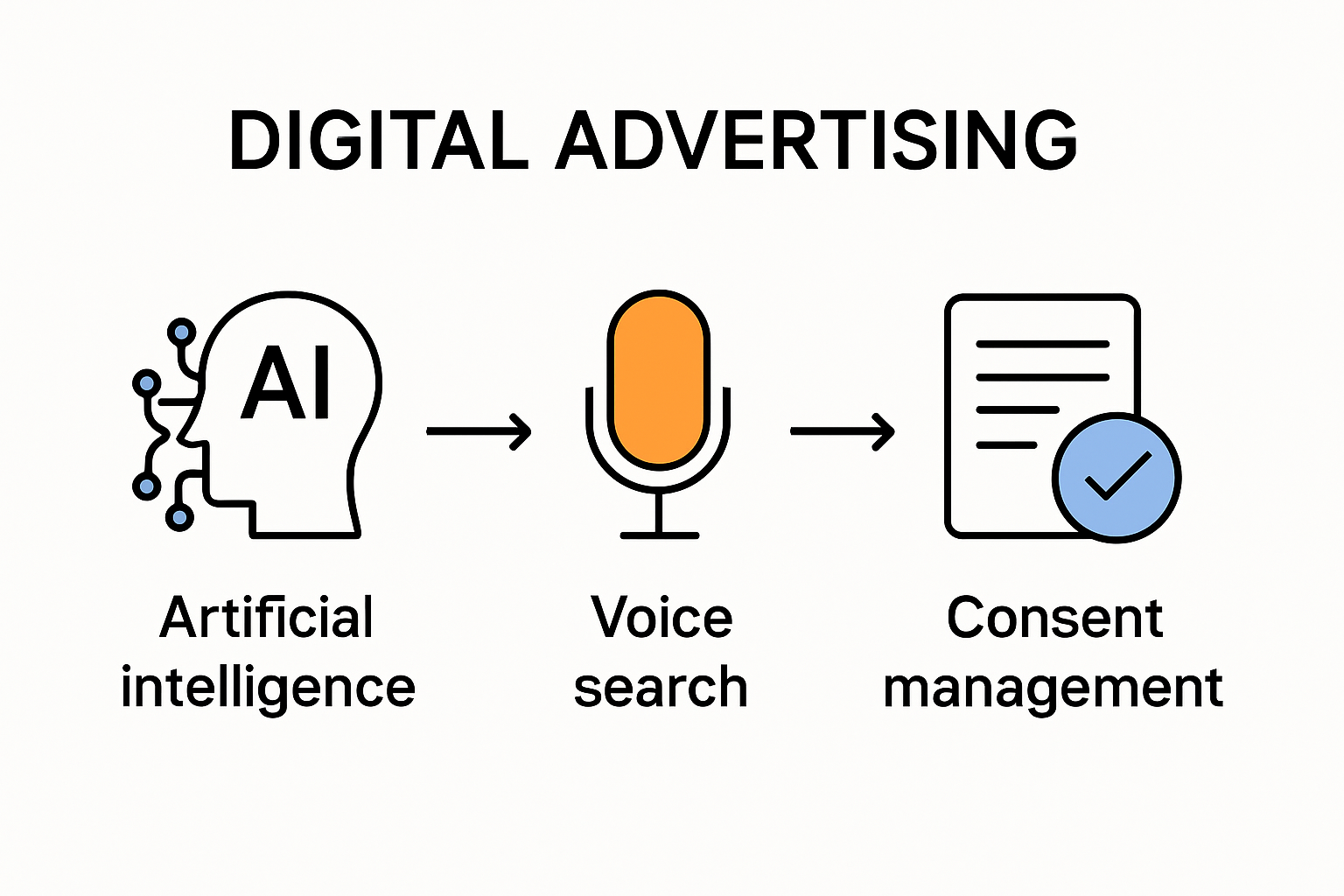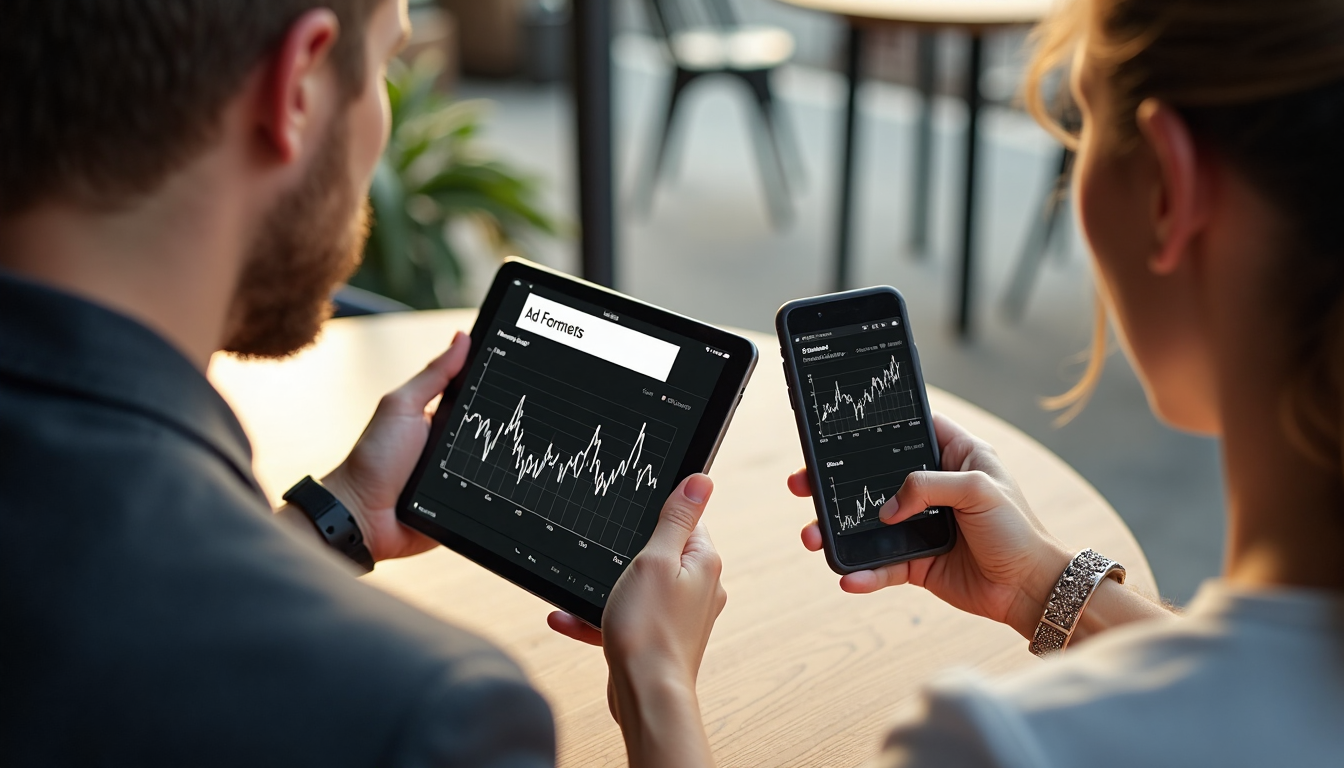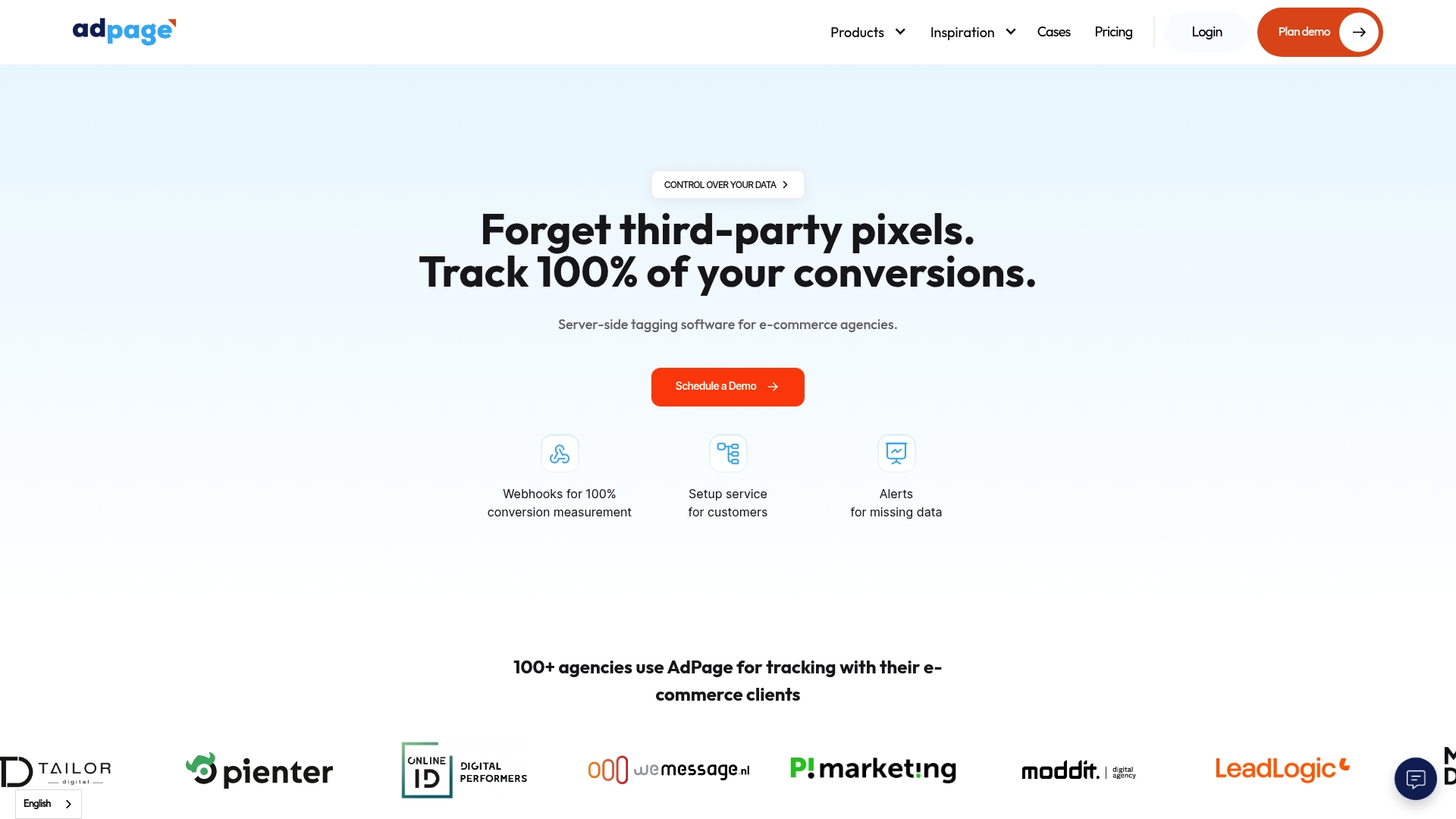Digital advertising is about to shatter old records, with global ad spend set to hit $1.08 trillion in 2025 and digital channels grabbing 73.2 percent of that total. Here is what might surprise you. Despite massive investments in slick creative and AI tools, the biggest winners are not necessarily big brands or celebrity campaigns. Instead, user-generated content is on track to overtake professionally made ads in revenue, showing that authenticity and community matter more than ever.
Table of Contents
- Key Components Of Digital Advertising Today
- Effective Ad Formats And Channel Selection
- Measuring Success: Analytics And Conversion Optimisation
- Emerging Trends In Digital Advertising For 2025
Quick Summary
| Takeaway | Explanation |
|---|---|
| Embrace AI and Machine Learning | Implement AI-driven technologies for real-time optimisation, predictive analytics, and automated audience segmentation to enhance advertising effectiveness. |
| Prioritise Mobile-First Strategies | Shift focus to mobile platforms, ensuring responsive designs and vertical video formats to engage the majority of users spending 65.3% of global ad spend on mobile. |
| Adopt Robust Data Privacy Practices | Develop transparent data collection strategies and consent management systems to comply with regulations like GDPR and CCPA while maintaining user trust. |
| Leverage Programmatic Advertising | Utilise programmatic ad buying for precise targeting and efficient placement, as it accounted for 82.4% of digital ad expenditures in 2024. |
| Harness User-Generated Content | Integrate authentic, community-driven narratives into advertising strategies as user-generated content is expected to surpass professionally produced content in ad revenue share by 2025. |
Key Components of Digital Advertising Today
Understanding digital advertising requires a comprehensive look at the complex ecosystem that drives modern marketing strategies. The landscape has transformed dramatically, with technology and data playing pivotal roles in how businesses connect with potential customers.

Artificial Intelligence and Machine Learning
Artificial intelligence has become the cornerstone of sophisticated digital advertising approaches. According to Global Risk Community, AI is revolutionizing how marketers understand and engage with audiences. Machine learning algorithms now enable unprecedented levels of personalization, allowing advertisers to predict customer behavior with remarkable accuracy.
The power of AI extends beyond simple targeting. Modern systems can now:
- Automated Segmentation: Dynamically categorize audiences based on complex behavioral patterns
- Predictive Analytics: Forecast potential customer interactions and conversion probabilities
- Real-time Optimization: Adjust advertising strategies instantaneously based on performance metrics
Voice Search and Conversational Marketing
The emergence of smart assistants has fundamentally altered digital advertising strategies. AOK Marketing highlights that voice search optimization has become crucial for brands seeking to remain competitive. Marketers must now design content that speaks directly to conversational queries, understanding that voice searches tend to be more natural and contextual than traditional text-based searches.
Key considerations for voice search optimization include:
- Natural Language Processing: Developing content that matches conversational speech patterns
- Long-tail Keyword Integration: Focusing on more detailed, question-based search terms
- Context-aware Content: Creating responses that directly address user intent
Data Privacy and Consent Management
With increasing regulatory scrutiny, digital advertising now demands robust privacy and consent frameworks. Advertisers must balance personalization with respect for user data protection. Modern platforms require sophisticated consent management systems that provide transparency and user control.
Effective data privacy strategies involve:
- Transparent Data Collection: Clearly communicating how user information will be utilized
- Granular Consent Options: Allowing users precise control over their data sharing
- Compliance with Global Regulations: Adhering to frameworks like GDPR and CCPA
The digital advertising landscape continues to evolve at an unprecedented pace. Success now hinges on understanding these key components: leveraging advanced technologies, adapting to new search paradigms, and maintaining rigorous data ethics. Marketers who can successfully integrate these elements will be best positioned to create meaningful, effective advertising experiences in an increasingly complex digital world.
To provide a concise overview, the following table summarises the primary components of digital advertising today and their major benefits:
| Component | Description | Key Benefit |
|---|---|---|
| Artificial Intelligence & Machine Learning | Automates targeting, segmentation, and personalisation | Increased effectiveness and accuracy |
| Voice Search & Conversational Marketing | Optimises content for natural, voice-based queries | Better engagement with smart assistant users |
| Data Privacy & Consent Management | Ensures user data protection and regulatory compliance | Builds trust & legal compliance |
Effective Ad Formats and Channel Selection
Navigating the digital advertising ecosystem requires strategic understanding of emerging channels and format effectiveness. The modern advertising landscape demands precision and adaptability across multiple platforms.

Mobile-First Advertising Strategies
Data Portal reveals that mobile platforms now dominate digital advertising, representing 65.3% of global ad spend in 2024. This dramatic shift necessitates a comprehensive mobile-first approach for advertisers seeking maximum audience engagement.
Successful mobile advertising strategies prioritize:
- Responsive Design: Creating ads that seamlessly adapt to various screen sizes
- Vertical Video Formats: Optimizing content for smartphone viewing preferences
- Interactive Mobile Experiences: Developing engaging, touchscreen-friendly ad interactions
Programmatic Advertising Dominance
Programmatic advertising has transformed digital marketing channels. According to Data Portal, programmatic ad buying represented 82.4% of digital ad expenditures in 2024, with total spending exceeding $650 billion. Automated ad placement now enables unprecedented targeting precision and efficiency.
Key programmatic advertising capabilities include:
- Real-time Bidding: Instantaneous ad space acquisition based on audience data
- Audience Segmentation: Granular targeting using complex behavioral algorithms
- Cross-platform Integration: Seamless advertising experiences across multiple digital channels
Emerging Retail Media Networks
The rise of retail media networks represents a significant transformation in digital advertising channels. Data Portal indicates these platforms now account for 21.2% of global digital ad spend, nearly doubling since 2019. Online retail platforms have become critical advertising ecosystems, offering direct access to consumers with high purchase intent.
Advantages of retail media network advertising include:
- Contextual Relevance: Displaying ads directly within shopping environments
- Purchase-intent Targeting: Reaching consumers actively considering product purchases
- Performance Tracking: Immediate conversion and engagement measurement
Successful digital advertising in 2025 demands a holistic, data-driven approach. Marketers must continuously adapt to technological shifts, understanding that the most effective strategies combine sophisticated targeting, platform diversity, and user-centric design. The future of advertising lies not in individual channels, but in creating integrated, intelligent marketing ecosystems that deliver personalized experiences across multiple touchpoints.
Below is a table outlining major digital ad formats, their channel focus, and primary advantages for easy comparison:
| Ad Format | Channel Focus | Primary Advantages |
|---|---|---|
| Mobile-first Ads | Mobile Platforms | High engagement; aligns with mobile usage |
| Programmatic Display | Web/Mobile, Cross-platform | Efficient, precise targeting; automation |
| Retail Media Network Advertising | E-commerce Platforms | High intent audiences; immediate conversion |
Measuring Success: Analytics and Conversion Optimisation
In the rapidly evolving digital advertising landscape, measuring success goes far beyond simple impression counts. Modern marketers require sophisticated analytical approaches that provide deep insights into campaign performance and user engagement.
Advanced Web Analytics Frameworks
Research in Industrial Marketing Management emphasizes that the true value of marketing performance measurement lies not just in collecting data, but in how organizations strategically exploit their metrics systems. Performance measurement now demands a comprehensive, context-aware approach that considers both quantitative metrics and organizational dynamics.
Effective web analytics strategies involve:
- Holistic Data Integration: Combining multiple data sources for comprehensive insights
- Contextual Performance Evaluation: Understanding metrics within specific organizational frameworks
- Dynamic Metric Adaptation: Continuously refining measurement approaches based on emerging trends
Conversion Rate Optimization Techniques
According to a study in the Journal of Marketing Analytics, conversion rate optimization has become a sophisticated discipline requiring multifaceted approaches. The research demonstrated a robust framework for digital retailers, highlighting the complexity of transforming user interactions into meaningful conversions.
Key conversion optimization strategies include:
- User Journey Mapping: Detailed analysis of customer interaction pathways
- Behavioral Segmentation: Creating targeted optimization strategies for different user groups
- Predictive Conversion Modeling: Using advanced algorithms to forecast potential conversion opportunities
Click-Through Rate Prediction Models
Research from arXiv provides fascinating insights into click-through rate prediction, a critical metric for understanding digital advertising effectiveness. Modern modeling frameworks have evolved to offer unprecedented precision in predicting user engagement.
Advanced click-through rate prediction involves:
- Machine Learning Algorithms: Developing sophisticated predictive models
- Multivariate Analysis: Considering complex interactions between different advertising variables
- Real-time Performance Adjustment: Dynamically updating strategies based on predictive insights
Successful digital advertising in 2025 requires more than traditional measurement approaches. Marketers must embrace a holistic, data-driven perspective that combines technological sophistication with strategic insight. The future of analytics lies in creating intelligent, adaptive systems that transform raw data into actionable strategies, enabling businesses to navigate the complex digital advertising ecosystem with unprecedented precision and effectiveness.
Emerging Trends in Digital Advertising for 2025
The digital advertising landscape continues to transform at an unprecedented pace, driven by technological innovations and shifting consumer expectations. Understanding these emerging trends is crucial for marketers seeking to remain competitive in an increasingly dynamic environment.
Global Digital Advertising Expansion
Reuters reports that digital advertising is projected to reach $1.08 trillion globally in 2025, with digital channels accounting for 73.2% of total advertising expenditure. This remarkable growth underscores the critical importance of digital platforms in modern marketing strategies.
Key characteristics of this expansion include:
- Global Market Penetration: Increasing digital advertising reach across diverse geographical markets
- Technological Infrastructure: Continued investment in digital communication technologies
- Consumer Digital Engagement: Growing consumer comfort with digital interaction platforms
Artificial Intelligence in Ad Production
Artificial intelligence is revolutionizing advertising production and targeting mechanisms. According to Reuters, companies like Meta are planning comprehensive AI integration for ad creation by 2026, signaling a transformative shift in content generation strategies.
Primary AI-driven advertising innovations include:
- Automated Content Generation: Creating personalized ad copy and visual content
- Predictive Audience Targeting: Identifying and engaging most relevant consumer segments
- Real-time Performance Optimization: Dynamically adjusting advertising strategies
User-Generated Content Revolution
User-generated content is poised to reshape digital advertising paradigms. Reuters indicates that user-generated content will surpass professionally produced content in ad revenue share by 2025, reflecting a significant shift towards more authentic and relatable advertising experiences.
Significant aspects of this content revolution include:
- Authenticity-driven Marketing: Prioritizing genuine, consumer-created narratives
- Community-centric Strategies: Leveraging user experiences and perspectives
- Interactive Content Formats: Encouraging direct consumer participation in brand storytelling
The digital advertising landscape of 2025 demands unprecedented agility, technological sophistication, and consumer-centric approaches. Successful marketers will seamlessly integrate advanced technologies, leverage data-driven insights, and create meaningful connections that transcend traditional advertising boundaries. The future belongs to those who can navigate this complex ecosystem with creativity, precision, and genuine understanding of evolving consumer expectations.
Frequently Asked Questions
What is the projected global ad spend for 2025?
Global ad spend is set to reach $1.08 trillion in 2025, with digital channels accounting for 73.2% of this total.
How is AI influencing digital advertising strategies?
AI is revolutionising digital advertising by enabling real-time optimisation, predictive analytics, and automated audience segmentation, enhancing overall advertising effectiveness.
Why is user-generated content important in digital advertising for 2025?
User-generated content is expected to surpass professionally produced ads in revenue share by 2025, as consumers increasingly prefer authentic and relatable narratives.
What are the key considerations for mobile-first advertising strategies?
Key considerations for mobile-first advertising include creating responsive designs, optimising for vertical video formats, and developing interactive mobile experiences to engage users effectively.
Transform Your Digital Ad Performance with Advanced Conversion Tracking
Are you struggling to keep pace with the fast-changing world of digital advertising? As you discovered in our guide to 2025, data loss, privacy regulations, and inaccurate tracking can hold back even the most innovative campaigns. If you are aiming for AI-powered optimisation, seamless consent management and a trustworthy view of user activity, it is vital to overcome these obstacles now. The future of digital marketing belongs to those who can measure and optimise every conversion, not just a portion of the data.

Do not let data blind spots or compliance worries limit your growth. Harness the power of AdPage to drive your results further. Our platform gives you:
- Server-side tracking that captures 100 percent of conversions, closing gaps left by outdated analytics methods
- GDPR-ready consent management that builds trust and keeps you compliant
- Smooth integration with top e-commerce platforms such as Shopify, WooCommerce, and Magento for a frictionless experience
- Full onboarding and support to help you take action right away
Ready to set a new standard for your ad performance? Discover how you can upgrade your digital marketing strategy and protect every valuable insight with AdPage’s conversion tracking solutions. Take the next step now and see the difference for yourself.



.png)
